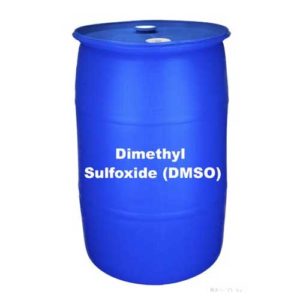HEXANE (C6H14)
ABOUT:
- Hexane is typically produced from crude oil through fractional distillation, which separates the crude oil into different fractions based on their boiling points.
- The hexane fraction is further purified through refining processes such as hydrotreating, hydrocracking, and catalytic reforming to remove impurities and improve its quality.
- The purified hexane is then subjected to isomerization, a process that converts straight-chain hydrocarbons into branched-chain hydrocarbons. This step is necessary to improve the octane rating of the hexane and increase its usefulness as a solvent.
- The final step involves separating the hexane from other compounds in the mixture by distillation or other separation techniques.
PHYSICAL PROPERTIES:
Appearance: colorless liquid
Odor: mild, sweet odor
Molecular weight: 86.18 g/mol
Density: 0.659 g/cm³ (at 20 °C)
Boiling point: 68.7 °C
Melting point: -95 °C
Vapor pressure: 150 mmHg (at 25 °C)
Flash point: -22 °C
Autoignition temperature: 233 °C
CHEMICAL PROPERTIES:
- Insoluble in water, soluble in most organic solvents
- Hexane is highly flammable and can form explosive mixtures with air.
- Hexane is relatively unreactive, but can undergo combustion and react with some strong oxidizing agents.
- Hexane is relatively stable, but can undergo degradation reactions under certain conditions such as exposure to UV light or high temperatures.
- Hexane is toxic and can cause neurological damage and other health problems if inhaled or ingested in high amounts.
APPLICATIONS:
OIL REFINING INDUSTRY:
- Hexane is a commonly used solvent in the oil refining industry for extracting oil from plant material, such as soybeans or corn.
CONSTRUCTION:
- Hexane is commonly used as a solvent in the production of adhesives and sealants used in construction. It is used to dissolve and dilute the adhesive components and to make them easier to apply.
AUTOMOTIVE INDUSTRY:
- Hexane is a powerful solvent and is used in the automotive industry to clean and degrease parts. It is particularly effective at removing oil and grease from engine parts.
- Hexane can be used as a fuel in internal combustion engines. However, its use as a fuel is limited due to its low octane rating, which means that it has a tendency to detonate and cause engine knock.
FOOD INDUSTRY:
- De-fatting of food products: Hexane is used to remove fat from food products such as potato chips and other snack foods.
- Cleaning of food processing equipment: Hexane is used as a solvent to clean food processing equipment such as conveyors, mixers, and tanks.
RUBBER INDUSTRY:
- Hexane is used as a solvent to extract natural rubber from latex. Natural rubber contains various impurities, and hexane is effective at removing these impurities from the latex, resulting in a purer and more uniform product.
- Vulcanization is a process that makes rubber more durable and elastic. Hexane is used as a solvent for the vulcanization process. It is mixed with sulfur and other additives and applied to the rubber to improve its strength and elasticity.
TEXTILE INDUSTRY:
- Hexane is used to dissolve and remove natural waxes and oils found in natural fibre fabrics such as cotton and wool. This is known as scouring, and it is done to prepare the fabric for further processing.
- Hexane is used as a solvent in the dyeing and textile printing to help dissolve the dye and ensure even distribution of color on the fabric.
PAINTS & COATING:
- Hexane is used as a solvent to dissolve and mix various resins, pigments, and other additives that make up the paint and coating formulations.
- Hexane is used to extract natural resins from plants like gum rosin, which is used in the manufacture of paints, varnishes, and adhesives.
SAFETY MEASURES:
- Ensure that the area where you are using hexane is well ventilated to prevent the buildup of flammable vapors.
- Wear appropriate PPE, including gloves, safety glasses or goggles, and a lab coat or apron when handling hexane to prevent skin contact and ingestion or inhalation of the chemical.
- Store hexane in a cool, dry, and well-ventilated area, away from any sources of ignition, such as sparks, flames, or heat sources.
- Smoking is strictly prohibited in the area where hexane is being used or stored.
- Make sure that fire prevention measures are in place, including fire extinguishers, fire alarms, and sprinkler systems.
- Ensure that everyone in the area knows what to do in case of an emergency, including fire, spill, or exposure to hexane. This may include evacuation procedures, emergency contact numbers, and first aid procedures.
- Use as directed: Follow the manufacturer’s instructions and guidelines for the safe handling, use, and disposal of hexane.





Reviews
There are no reviews yet.